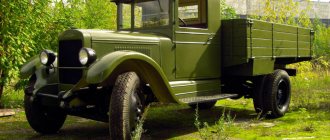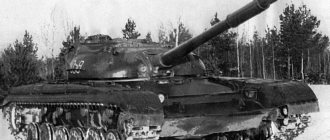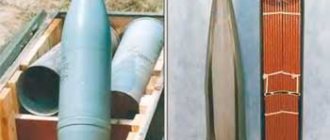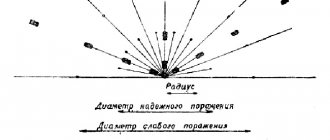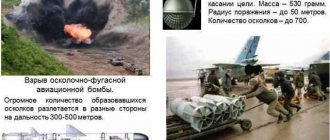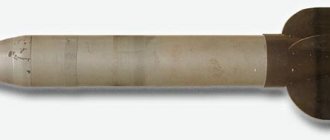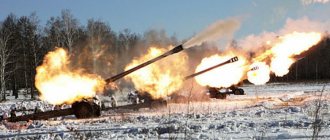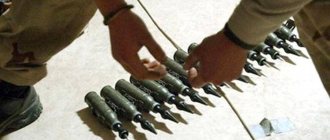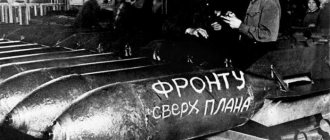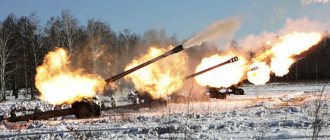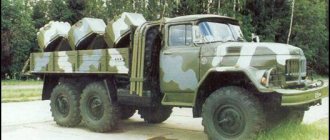Cumulative ammunition is a special type of shells, rockets, mines, hand grenades and grenades for grenade launchers, designed to destroy enemy armored vehicles and their reinforced concrete fortifications. The principle of their operation is based on the formation after an explosion of a thin, narrowly directed cumulative jet, which burns through the armor. The cumulative effect is achieved due to the special design of the ammunition.
Currently, cumulative ammunition is the most common and most effective anti-tank weapon. The massive use of such ammunition began during the Second World War.
The widespread use of cumulative ammunition is facilitated by their simplicity, low cost and unusually high efficiency.
Armor-piercing projectile
There are various subtypes of these ammunition: 1) Armor-piercing caliber projectiles. 2) Armor-piercing sub-caliber shells. 3) Armor-piercing feathered sub-caliber projectiles. 4) Armor-piercing cumulative shells. 5) Armor-piercing high-explosive shells.
Caliber projectiles (SBO)
German series of caliber shells.
Designed to destroy tank armor with their kinetic energy . When the armor is penetrated, the tank crew is hit by fragments of the tank's armor. Popularly, this type of projectile is simply called armor-piercing or “blank.” The projectile is solid and made of durable metal. Currently used only by backward countries , because have already been supplanted by armor-piercing feathered sabot shells.
Sub-caliber projectiles (BPS)
They are absolutely similar to SBOs, with the exception that they have a smaller caliber than the caliber of the gun, and therefore less weight. Accordingly, greater speed. Therefore, they have greater armor penetration. Currently, they are used only by backward countries, like SBO.
Feathered sabot projectiles (BOPS, OPS, OBPS)
One of the most effective means of destroying tanks at a distance of 1 km . They are an arrow-shaped core made of alloys of durable metals such as uranium or tungsten. In the bore, the core is held by a tray, which is separated after exiting the barrel. When hit, the crew is hit by armor fragments. Has enormous penetrating power . The most modern American BOPS are capable of penetrating the most advanced, according to open data, Russian Relikt remote sensing system. There is a known case when in Iraq an Abrams pierced through a T-72M1 with such a projectile from a distance of less than a kilometer. Currently, BOPS is included in every modern MBT. The shells are relatively inexpensive . They were developed in the USA at the end of the 19th century and in the USSR after the First World War. Used by the Wehrmacht from the beginning of World War II against Soviet heavy tanks.
Cumulative projectiles (CS)
Cumulative ammunition is one of the effective means of combating armored vehicles. The armor is penetrated using a cumulative jet, i.e. all the energy of the explosion comes out through a very narrow hole, which burns through the metal of the armor , i.e. its action is based on the cumulative effect, also known as the Munroe effect (the American who rediscovered the effect in 1887, the first was the Russian military engineer General Boreskov in 1864). The crew is simply being smoked out. However, cumulative projectiles are expensive and ineffective against remote sensing and cheap anti-cumulative shields . At the end of World War II, German troops used cumulative Faust cartridges, which showed high effectiveness against medium tanks. There is also a cumulative fragmentation projectile (COS) - a mixture of a cumulative and fragmentation projectile . The fragmentation effect manifests itself to a much lesser extent than the cumulative effect. There are only three tanks in the arsenal: Abrams, Leopard 2, Leclerc.
Armor-piercing high-explosive shells (APS)
Shells invented in Great Britain at the end of World War II. Initially they were used against fortifications, but then they were also used to fire at enemy tanks . Most NATO countries were armed with this ammunition in the 50s and 60s, but later they began to abandon them in favor of cumulative ones , which are much more effective. But the British don’t care about this and they are the only ones in the world who still use this type of projectile, without using cumulative ones. These projectiles have a lower cost and a longer firing range than cumulative ones.
Cumulative projectile: principle of operation
Cumulative effect means strengthening the action of a process due to the addition of efforts. This definition very accurately reflects the principle of operation of the cumulative effect.
A funnel-shaped recess is made in the warhead of the charge, which is lined with a layer of metal one or several millimeters thick. This funnel is turned with a wide edge towards the target.
After detonation, which occurs at the sharp edge of the crater, the blast wave spreads to the side walls of the cone and collapses them towards the axis of the ammunition. During the explosion, enormous pressure is created, which turns the lining metal into a quasi-liquid and, under enormous pressure, moves it forward along the axis of the projectile. This creates a metal jet that moves forward at hypersonic speed (10 km/s).
It should be noted that in this case, the lining metal does not melt in the traditional sense of the word, but deforms (turns into liquid) under enormous pressure.
When a stream of metal enters the armor, the strength of the latter does not matter at all. Its density and thickness are important. The penetration ability of a cumulative jet depends on its length, the density of the lining material and the armor material. The maximum penetrating effect occurs when the ammunition explodes at a certain distance from the armor (this is called the focal distance).
The interaction of armor and cumulative jet occurs according to the laws of hydrodynamics, that is, the pressure is so great that the strongest tank armor behaves like a liquid when hit by a jet. Typically, HEAT ammunition can penetrate armor that is between five and eight calibers thick. When lined with depleted uranium, the armor-piercing effect increases to ten calibers.
Concrete-piercing shells
Concrete-piercing shells are intended for firing at reinforced concrete defensive structures , strong stone and brick buildings adapted for defense, as well as strong enemy dugouts. Also, if necessary, concrete-piercing shells can be used for direct fire at tanks and other armored targets. The only modern tank in the world that has a concrete-piercing shell is the Abrams.
There are a huge variety of different ammunition in the world, which is associated with a constant arms race. This article does not contain the entire list. The following were missed: lighting, propaganda, incendiary, thermobaric, biological, chemical, nuclear shells.
Advantages and disadvantages of cumulative ammunition
Such ammunition has both strengths and weaknesses. Their undoubted advantages include the following:
- high armor-piercing;
- armor penetration does not depend on the speed of the ammunition;
- powerful armor effect.
For caliber and sub-caliber projectiles, armor penetration is directly related to their speed; the higher it is, the better. That is why artillery systems are used to use them. For cumulative ammunition, speed does not matter: a cumulative jet is formed at any speed of collision with the target. Therefore, the cumulative warhead is an ideal weapon for grenade launchers, recoilless rifles and anti-tank missiles, bombs and mines. Moreover, too high a projectile speed prevents the formation of a cumulative jet.
If a cumulative shell or grenade hits a tank, it often leads to an explosion of the vehicle's ammunition load and completely disables it. The crew has virtually no chance of salvation.
Cumulative ammunition has a very high armor-piercing power. Some modern ATGMs penetrate homogeneous armor with a thickness of more than 1000 mm.
Disadvantages of cumulative ammunition:
- quite high manufacturing complexity;
- difficulty of application for artillery systems;
- vulnerability to dynamic protection.
The projectiles of rifled guns are stabilized in flight due to rotation. However, the centrifugal force that arises in this case destroys the cumulative jet. Various “tricks” have been invented to get around this problem. For example, in some French ammunition only the projectile body rotates, while its cumulative part is mounted on bearings and remains stationary. But almost all solutions to this problem significantly complicate the ammunition.
Ammunition for smooth-bore guns, on the contrary, has too high a speed, which is insufficient to focus the cumulative jet.
This is why ammunition with shaped charge warheads is more common for low-velocity or stationary ammunition (anti-tank mines).
There is a fairly simple defense against such ammunition - the cumulative jet is dissipated by a small counter-explosion that occurs on the surface of the vehicle. This is the so-called dynamic protection; today this method is used very widely.
To penetrate dynamic protection, a tandem cumulative warhead is used, which consists of two charges: the first eliminates dynamic protection, and the second penetrates the main armor.
Today there are cumulative ammunition with two and three charges.
Three types of shells in the self-propelled gun arsenal
In 2022, the idea of expanding the number of shells has already been tested. In addition to basic landmines, special (with increased damage) and armor-piercing charges were presented.
Players were not satisfied with this approach for the following reasons:
- preserved incredibly long cooldown when changing projectiles;
- unreasonably inflated cost of new types of shells;
- lack of real changes regarding the equipment opposing the artillerymen.
However, the concept itself was assessed positively, so its refinement continued.
Now the choice is between two types of shells - basic and special. The second has only a slightly increased scattering of fragments at a significantly higher cost. As part of Sandbox 2021, not only will the characteristics of land mines be reworked, but a third type will also appear. Let's look at them in more detail using the example of a Soviet self-propelled gun level 10 Ob. 261 .
1. Basic (high-explosive fragmentation with stun)
This is the easiest type to use, dealing reduced damage (-10% of the current one), but with a splash sufficient to cover and stun several targets. Penetration will remain at the same level, but if the armor holds back the shot, no critical damage will be caused to the modules or crew.
Among other types of projectiles, this will have the lowest flight speed, but an improved hinged trajectory. Artillerymen will be able to cover targets behind elevated terrain and other obstacles with these landmines.
2. Alternative (high-explosive fragmentation without stunning)
The optimal option for combating lightly and medium-armored vehicles. The splash for alternative projectiles will decrease by 2 times, and the damage radius will decrease by 4 times. The penetration indicator is 50% higher than the current value, and the damage dealt is 10% higher. This type of landmine will continue to hit internal modules and crew, but will not be able to stun the target. It is characterized by a trajectory that is not as convenient as its predecessor, but has an increased flight speed.
The following comparative table presents the penetration rates of basic and alternative land mines on some types of self-propelled guns that will be available as part of the Sandbox 2021.
3. Tactical (armor-piercing)
Option for selective use. It will be effective against slow and heavily armored vehicles that are not susceptible to serious damage from landmines. In the complete absence of splash and stun, it will hit the target from a much shorter distance, causing more damage than landmines without penetration. Armor-piercing shells are characterized by a penetration rate that is 4-6 times higher than that of landmines. They have the highest flight speed and an unstable trajectory due to their small angle relative to the ground.
In the case of Ob. 261 this projectile is armor-piercing, but it can also be cumulative in other self-propelled guns.
It is expected that tactical charges will be used only 10-15% of the time. A relatively fast system for switching between projectiles will allow you to use them effectively, adapting to the situation on the battlefield.
We would like to draw your attention to the graph of the speed and flight time of each projectile.
The cost for all three types will be equalized in order to maintain an optimal balance of costs. This will allow you to take each of the shells into battle, as well as use them without thinking about possible financial losses.
Artillerymen will no longer be able to live with one type of shell in their arsenal. A system with three types requires their competent combination in the current combat situation.
Interface improvements: display and switching between projectiles
The changes affecting projectiles resulted in obvious innovations in the interface. The currently loaded projectile will now be clearly displayed in crosshair mode. A special indicator will show whether a particular type, with its trajectory, will be able to hit a point in focus.
The developers also got to the aiming mode. Now a quick transition to the “from trajectory” view will be carried out using the mouse wheel. But the hotkey function responsible for this switching will not be removed.
The developers don't stop there. They continue to port popular products from modders to the official game client. Now this has affected the display of the flight time of projectiles, which greatly simplifies warning shots for artillerymen knowledgeable in the game.
All these innovations can be tested, configured and/or disabled through the game client configuration menu.

